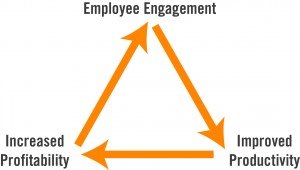Today is going to suck. Barring any pre-existing condition like depression, a pending court appearance or surgery, the overwhelming majority of human beings do not wake up with apathy or negativity as their first thought of the day. Most of us… regardless of socio-economic background, heritage or any other demographical category… most of us start the day, or engage, with positive intentions.
 So after we transition from “get up” to “fed up” how do we get back into a positive mindset? Dear Abby, I’m not. So all the personal stuff stays out of this dialogue, just focusing on the context of work environments here.
So after we transition from “get up” to “fed up” how do we get back into a positive mindset? Dear Abby, I’m not. So all the personal stuff stays out of this dialogue, just focusing on the context of work environments here.
Empowerment and delegation are two words utilized in just about every corporate seminar or workshop, but how often are they truly embraced in reality?
As alluded to in last week’s post regarding sharing your knowledge with others, if we truly empower someone we’ve given them all the logistical support they need to succeed. Empowerment means they’ve been given the KSA’s (anyone not know what that stands for?) through education and/or training.
Once empowered the only thing holding back an employee is you.
That’s where delegation comes into play. One of the most difficult things to do is to trust and let go. It’s one thing to empower someone with the ability to do the job, it’s another thing altogether to get out of their way and let them actually do it. But when you do… oh, the magic that ensues!
Engagement. In every work environment I’ve experienced, co-workers and subordinates alike react the same when empowered as well as delegated responsibility to do the job. Engagement in the training, the processes, and the delivery of whatever widgets or goods you deal in. Engagement is gold, because then they are invested.
Here’s the best part: it’s okay to tell them.
I’ve heard people quoting GI Joe’s famous line, “Knowing is half the battle” when faced with trouble or an issue. But how about when the proverbial hurdles are removed, when we can run full throttle? If a picture is worth 1000 words, I can think of no better illustration to articulate this concept better.
So there’s one guy’s theory on how to combat apathy. Start by trusting people not only with the knowledge, skills and abilities to do the job, actually stand back, or better yet walk away, and let them do it. People build positive momentum by accomplishing things. Don’t interfere with that energy. Guide it towards bigger goals where everyone perceives a profit, thus interest, thus no apathy.
Paul Grugin is part of the GovLoop Featured Blogger program, where we feature blog posts by government voices from all across the country (and world!). To see more Featured Blogger posts, click here.







Love this post! Thanks for sharing Paul.
Good article but a cautionary note. Inclusion is also a big part of engagement. The picture accompanying this post is not inclusive or engaging. These 19 thumbs up gestures are offensive to most Muslims and some South American countries. It is the equivalent to the meaning of the middle finger in Western culture.
Part of building inclusive and engaged workplaces is being able to be a cultural interpreter when it comes to understanding our employees, readers and customers. Attaching such an offensive picture to a great article weakens both inclusion and engagement.
Knowing may be half the battle for winning the war for engagment. Knowing what is offensive is everything in the struggle for inclusion.
This response served as the inspiration for my next Blog Post. Check it out when posted…
Cheers,
PG